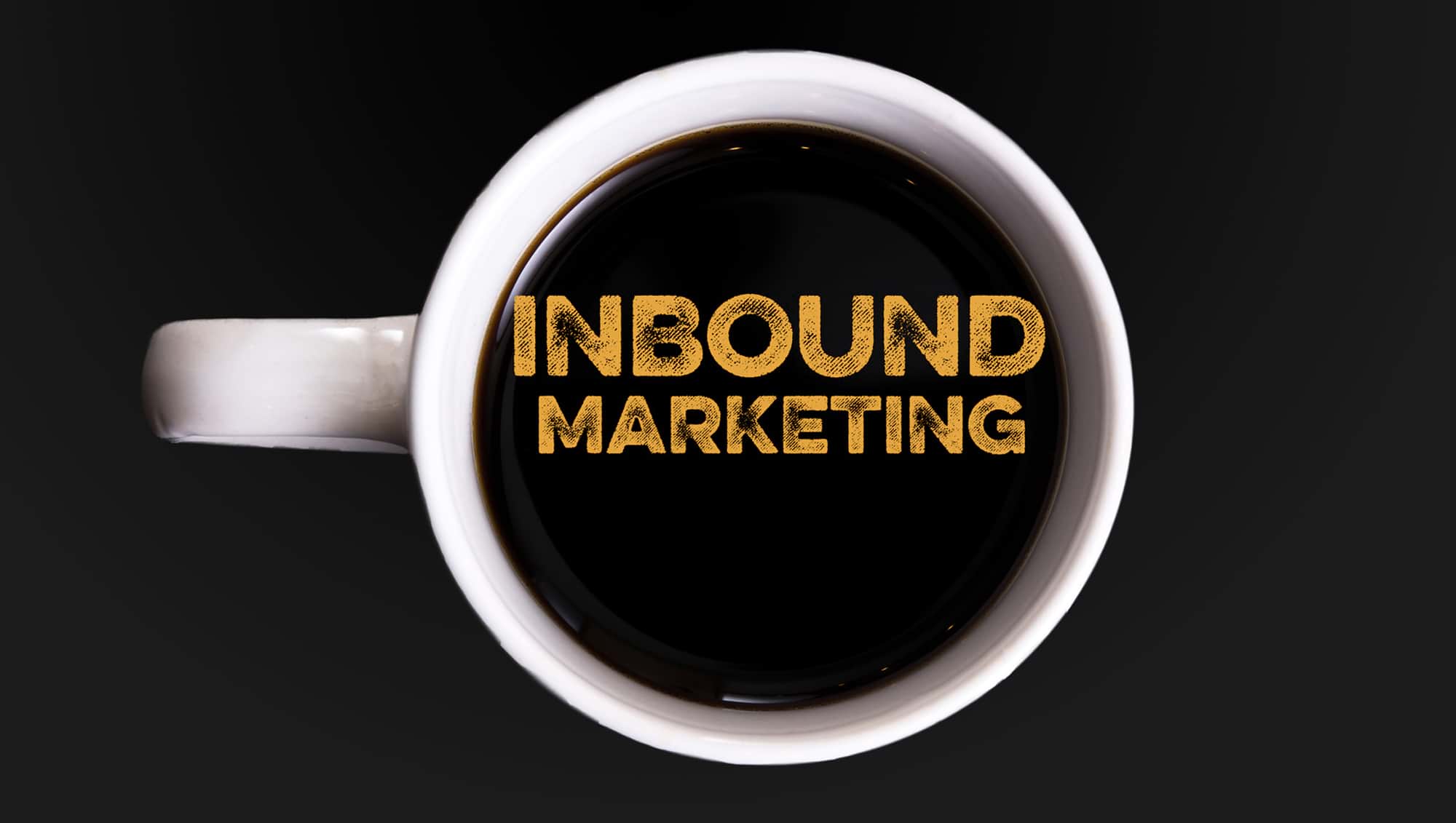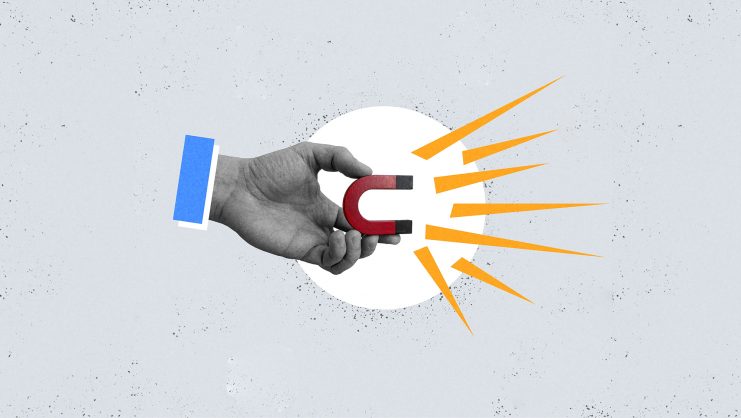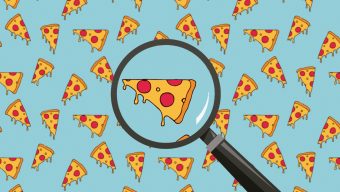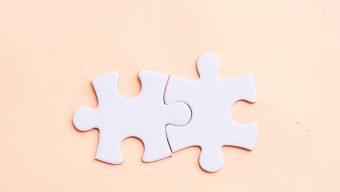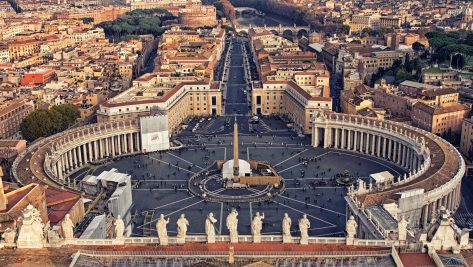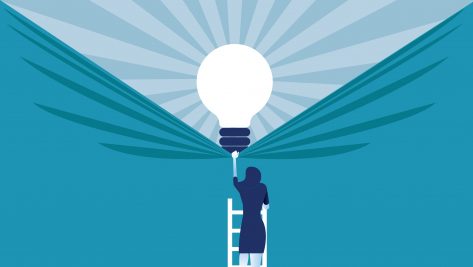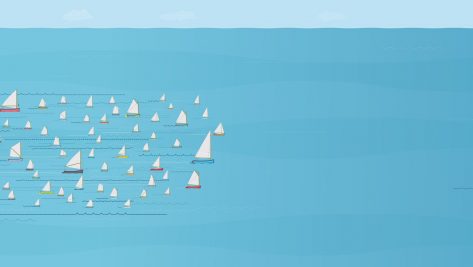The market is asking loud and clear for the invasions to stop: we know that 70% of users think less of a company that uses pop-up ads, while 40% of people are actually clicking on targeted ads by mistake.
Customers are tired of being interrupted, so we need to find more organic ways to reach them. Inbound marketing is going after this paradigm shift; in comparison to outbound marketing, it uses a more selective, sniper-like technique. According to Google, 80% of website visits are through search engines; this makes it vital to know what is going on at Google, since it is now prioritizing not only the marketing of content, but also the context and how it brings value to the customer.
Buyer persona, buyer journey and keyword hunting
Being knowledgeable about inbound marketing requires mastering three elements: buyer persona, buyer journey and keyword hunting. The buyer persona is the audience, the stereotypical customer. It is not market segmentation according to classical variables, but actually something more interesting that responds to a specific methodology and determines the success or failure of the entire plan. It is a kind of standard profile of the different audiences, established behavior patterns that are different from our customer typology.
To define these buyer personas, we need to look at studies that contextualize the client, in order to understand their environment, jargon, culture, industry leaders and trends and then captivate them and deploy the comprehensive digital strategy. For example, a company in the tourism industry could distinguish four buyer personas with numerous traits in common: a woman who works as a conference organizer, a mother deciding on a summer vacation who is on a budget, a young woman looking for a couples getaway who has less price sensitivity and, lastly, an athlete. However, if we zoom in, we can see the personal and professional goals of each buyer persona.
The buyer journey encompasses the phases of a trip: inspiration (ToFu: top of the funnel), planning (MoFu: middle of the funnel) and reservation (BoFu: bottom of the funnel), because the inbound marketing effect requires a funnel-like thought process. When someone makes a purchase, they go through the stages of discovery in response to a need (online searches), considering multiple options (seeking out opinions, testimonials, etc.) and ultimately the decision (comparing prices and offers, deciding which one suits them best). This process enables the brand to appear in the searches.
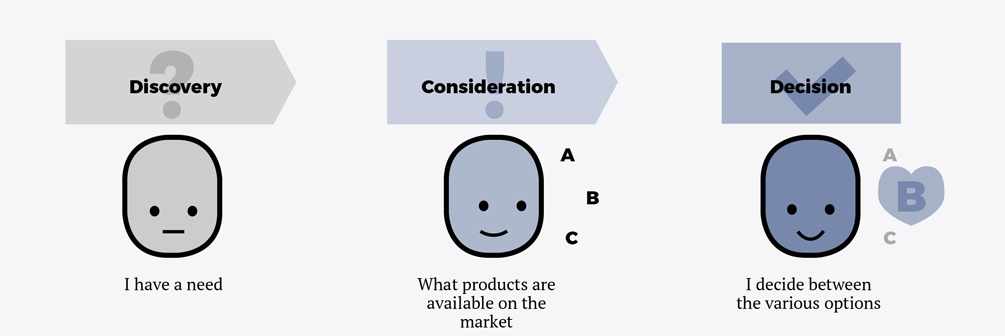 Source: We Are Marketing.
Source: We Are Marketing.
Continuing with the case of the tourism company, we will also consider, for example, that, according to a study by Google, the average journey of a mother lasts 24 days and that before finalizing the purchase she visits approximately 21.6 websites, with an average search time of one hour. The question of inbound marketing is: Where is my brand during all this time? Another aspect that must be taken into account is that in tourism, as in other industries, 70% of users don’t know where they want to go the first time they start looking for a trip.
The third element is keyword hunting, which consists of identifying all the search criteria of our buyer personas in relation to the moment in which they find themselves. That way, all the content can be planned and developed according to the search opportunities. And not only in the purchase phase or BoFu—where most companies focus their marketing efforts—but also in the two earlier phases of the funnel, those of inspiration and planning, where there is a higher volume of searches and it will be easier to be one step ahead of the competition.
The market is asking loud and clear for the invasions to stop: we know that 70% of users think less of a company that uses pop-up ads, while 40% of people are actually clicking on targeted ads by mistake.
The funnel
The second lever of inbound marketing is where the funnel takes center stage. The methodology is very consistent and includes four phases:
- Attracting visitors: Focuses on creating useful content, such as articles on the blog, e-books or videos that respond to the problems of potential customers, making us visible in search engines and sharing them on social networks. The goal is to create a lot of traffic to reach the buyer persona (understand their searches, what social networks they are on, how they operate and what blogs they read).
- Converting: This phase is about converting that traffic into leads, i.e., generating sales opportunities from the traffic being directed to that content, by creating valuable material and promoting calls to action.
- Closing: This entails nurturing a client until they are ready to receive an offer or a demo.
- Delighting: Leveraging the potential of the current customer to create more opportunities to sell and promote the brand, by acting as evangelizers or promoters of our brand.
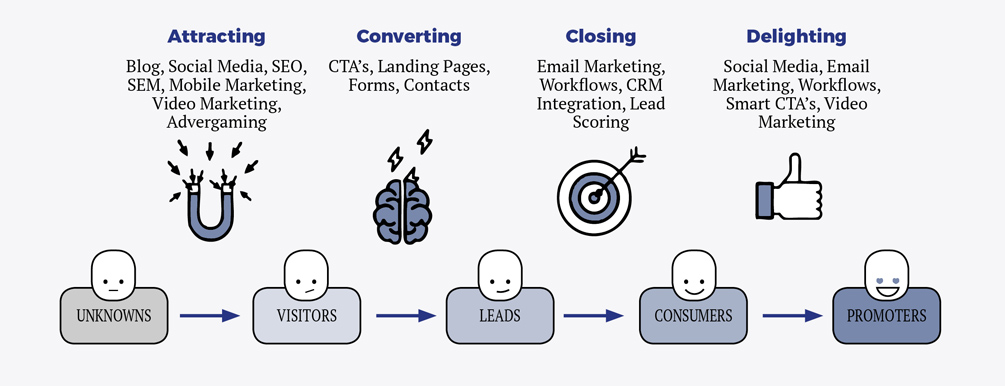
Blogging will be the magnetic attraction for a digital offering to reach its potential audience and gain top-of-mind awareness. According to HubSpot, blogs that are updated daily get five times more traffic than those that update once a week or less; and once they have 51 posts or more, traffic increases to 53%, and triples with 100 posts; when it reaches 200, it gets 4.5 times more visits. For this reason, planning, buyer orientation, promotion and posting speed are all vital.
Interestingly, in terms of content creation, 81% of the material consumed online is audiovisual and video is the most prevalent format, with a 115% higher likelihood of generating reservations or clicks, compared to 89% obtained through testimonials. Infographics are also effective, as people are evidently reading increasingly less.
As we see, the whole strategy behind inbound marketing is to captivate the consumer without being intrusive and it can be done with far fewer resources and get very good results. To quote Guy Kawasaki: “If you have more money than brains, you should focus on outbound marketing. If you have more brains than money, you should focus on inbound marketing.”
© IE Insights.



